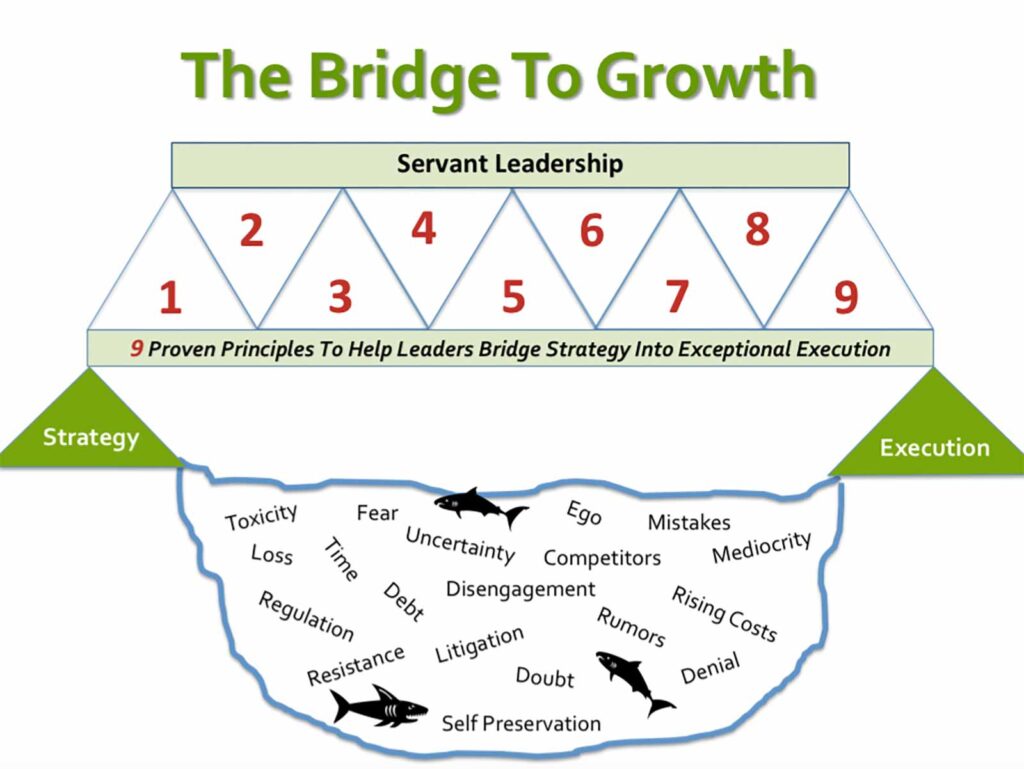Every leader is challenged by the feeling that their team could achieve more. They constantly wonder if they are doing everything possible to enable the success of the people they lead. I believe the best leaders feel this yearning most. While they are beholden to the stakeholders who hired them, they are driven by the sense of responsibility they feel toward their workforce.
The Leader’s Challenge
Most leaders are inundated with urgent responsibilities that demand their attention and distract them from what matters most. It’s easy for them to dedicate most of their time and energy to managing countless fires threatening their organization. The remainder can be consumed by the need to develop productive relationships with stakeholders that control resources they need to survive and prosper. Strategy, talent development, nurturing a healthy culture, and building workforce commitment can feel like luxuries that will be addressed when time permits, which unfortunately rarely happens. Ultimately, leaders who travel down this well-worn path deliver sub-optimal results.
What Matters Most
The cadence between strategy and execution is compressing, making the integration of the two more important than ever. But too many workers are being left out of this equation. We hear it all the time— leaders must motivate and fully engage the people they lead.
Increasingly, they can’t just assume that everyone will follow them just because they are the Boss. This sounds fairly obvious, but mounting evidence suggests a gap between intent and reality. A representative workforce survey by Franklin Covey revealed:
- Only 15% of workforce respondents could name even one of the top three goals their leaders had identified.
- Among those who could name a goal, only 51% said they were committed to achieving it.
- 81% of everyone surveyed said they were not held accountable to progress against the company’s goals.
- 87% said they had no idea what to do to help the company achieve the goals.
- Only 34% reported meeting at least monthly with their manager to discuss their progress on goals (best practice = weekly).
Equally startling, a global survey of over 90,000 workers by Willis Towers Watson uncovered:
- 21%of employees are truly engaged in their work, saying they would “go the extra mile.”
- 38% are mostly or entirely disengaged.
- Only 38% believe that senior management is sincerely interested in their well-being.
- Less than 40% believe senior management communicates openly and honestly.
- Just 44% believe that senior management tries to be visible and accessible.
- Less than half believe that senior management actions are consistent with the company’s core values.
Yet 86% like or love their job! Curiously, many people are settling for a job that paradoxically satisfies their basic needs anddenies them a motivating answer to the question, “How does my work connect to my company’s goals?” Unfortunately, their leaders have not fully engaged them in either the development or execution of their company’s mission, goals, and ultimately its success or failure.
In his book titled The Three Signs of a Miserable Job, Patrick Lincioni suggests that people disengage for the following reasons:
- Anonymity: They feel their leaders don’t know or care what they are doing.
- Irrelevance: They don’t understand how their job makes a difference.
- Immeasurable: They cannot measure or assess for themselves the contribution they are making.
This is an indictment of leadership, and it is why I believe that many companies are over-managed and under-led. What if 100% of the people in a company said they were “all in”?
What impact would going from 21% engagement to 100% engagement have on results? According to a recent Gallup survey, engaged employees are 21% more productive, have 37% less absenteeism and have 25% lower turnover. You do the math. Of all the levers a leader has at her or his fingertips to improve results, this is the biggest and most often under-leveraged.
Servant Leadership
Back in the early 1990’s, I read Max DePree’s book titled Leadership is an Art. I found his insights regarding servant leadership inspiring because he articulated the leader’s responsibilities to the people s/he leads in more personal, human, and engaging language than I had read or heard before. To give credit where credit is due, Robert K. Greanleaf first introduced the servant leader concept in 1970 when he published his first essay, entitled “The Servant As Leader”. Later, the essay was expanded into a book, and the servant leadership movement was born.
When I was first exposed to the servant leader concept, my career was blossoming and I was rising up the corporate ladder, yet I was not inspired by most of the leaders I studied above my immediate supervisor. I was having serious doubts about the desirability of ascending into the senior management ranks.
Other than their paychecks, there wasn’t much about the existing models that I found appealing, and I had serious reservations about how well I would fit in the executive suite. I was convinced that future leaders needed to be more in touch with the people they aspired to lead, and Max DePree gave me hope that I was right.
Since then I’ve had the good fortune to meet with and in some cases work with experts on this topic such as Steven Covey, Jack Welch, Jim Collins, and Tom Peters. Their lessons on leadership are legendary. They teach us that the best leaders are typically not the ones we read and hear about in the media. In his book Good to Great, Collins refers to them as Level 5 leaders.
Similar to Max DePree’s assessment, these leaders typically take more than their fair share of the blame for stumbles, and give credit to those they lead for successes. They also realize that they need all hands on deck to achieve the full potential of their company.
Servant leaders are force multipliers, not just force directors. They don’t settle for a mere 21% of their workforce being willing to step up and go the extra mile. They serve rather than just command the people in their company by giving them what they need to fully engage and commit to achieving the company’s goals.
The best leaders focus relentlessly on MOVING more of their workforce beyond being satisfactorily disengaged toward eagerly committed to making a difference.
Many people go through life never experiencing a compelling leader like this, which is why I feel privileged to have worked with several of them. I also had the good fortune of learning from a few exceptional sports coaches earlier in my life who helped me understand what it takes to win. None of these leaders and coaches was perfect, but each taught me something special that I was able to blend into my own blueprint of leadership principles.
Over the past three decades, I leveraged nine proven principles while leading high performance teams building world-class brands and businesses. We used these principles to maximize workforce engagement, and bridge strategy into exceptional execution and results.

9 Proven Leadership Principles
- Grow leaders and difference makers, not just followers.
- Build and orchestrate high-performance teams that are more powerful than the sum of their parts.
- Organizations inherently complicate things; focus your organization on strategic priorities, simplify operations, and accelerate progress.
- Champion the people who purchase and use your products and services; otherwise corporate inertia will steal too much energy inwardly toward lower value work.
- Cultivate a performance-based culture of innovation that unleashes the innate desire in the people you lead to solve, create, and contribute to winning.
- Communicate relentlessly to give your workforce the context they need to sign up for and truly commit to achieving company goals.
- See the world through the eyes of others, and your example will breed a healthier organization. Emotional intelligence often trumps IQ.
- Be the model you want emulated. Operate transparently, deliver on your promises, and remain steadfastly focused on doing the right things. Karma eventually rules.
- Coach people to achieve more than they thought possible.They need a model of success more than they need a critic. Inspire your entire organization to step up by revealing what success looks like, catching people doing something well, and showing your gratitude publicly.
It’s been many years since I first read Max DePree’s book. I’ve come to believe that servant leadership will ultimately be the only kind of leadership still standing. It’s not for everyone because it’s harder in the short term than autocratic or laissez faire models. But assuming a potential leader has the requisite skills to do the job, these 9 proven principles can help catapult them beyond mere qualification toward successfully achieving the success and growth they desire.





